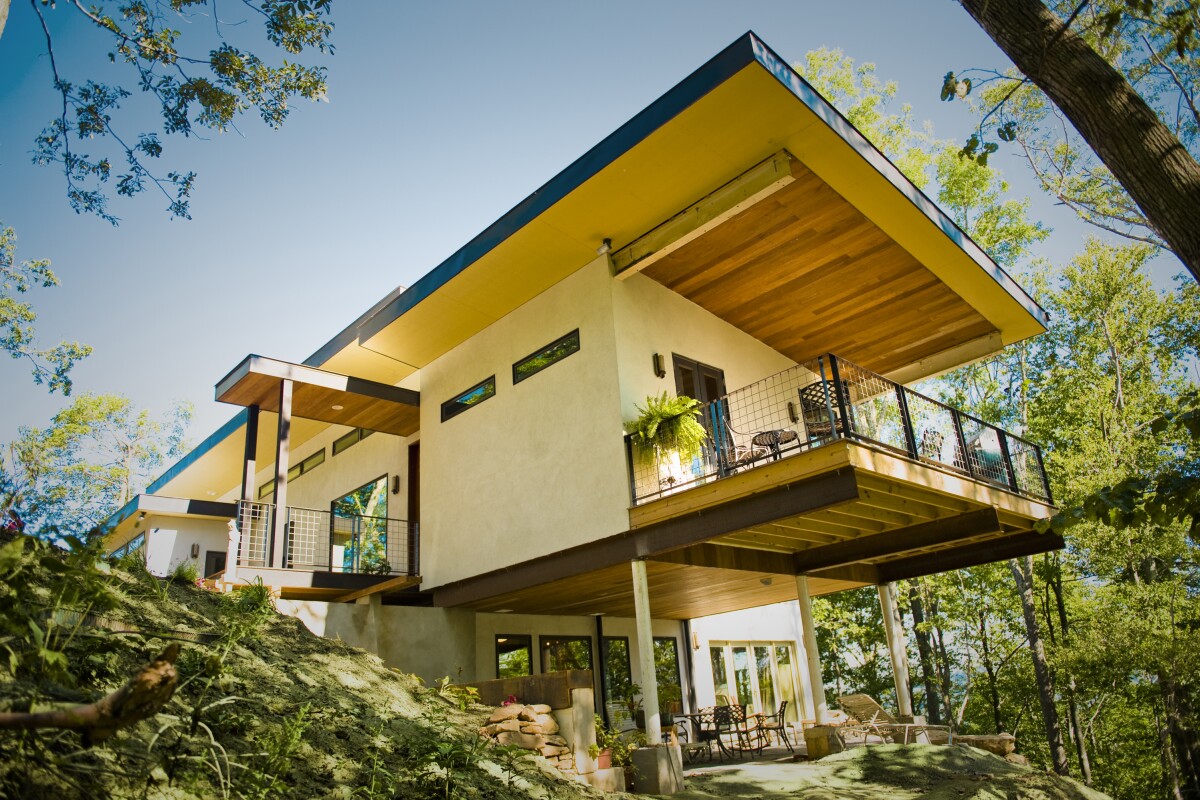America's first house made primarily of hemp has been built. Using a product known as Hemcrete – a mix of industrial hemp, lime and water – a team of 40 volunteers, sub-contractors and designers have recently completed construction of a hemp house located in Asheville, North Carolina (NC). Eco-friendly design and construction company Push Design has gained the support of community members and local officials alike and now plans to build more.
Using a product known as Hemcrete – a mix of industrial hemp, lime and water – a team of 40 volunteers, sub-contractors and designers recently completed construction of the hemp house in Asheville, North Carolina (NC). Eco-friendly design and construction company Push Design have gained the support of community members and local officials alike and now plan to build more.
Using hemp as a building material is not new. Hemcrete is a registered brand of hempcrete, a material has been an alternative building material used in Europe and Australia since the 1960's. The use of hemp in buildings dates back millennia in Asia and the Middle East where the Cannabis plant originates from. The biggest challenges of using hemp as a building material in the U.S are regulation, supply and cost, all of which are related.
David Mosrie of Push Design explains: “The main negative effect of the legal situation [in the U.S] is the cost to import it, which is frankly very high. Even while [the government] is legalizing medical marijuana now in 19 states, [they] can't seem to allow industrial hemp production. Local production would not only lower the environmental impact exponentially versus bringing it from Europe, but would bolster a struggling economic group and prop up local farming, a long regional tradition. It frankly makes no sense to keep up the ban , at the state or federal level, but it continues on.”
Given the restrictions on hemp production in the U.S, Push Design sourced their industrial hemp from the U.K through the company Tradical via a fellow NC company Hemp Technology.
“We are very lucky to have Hemp Tech and their founder, Greg Flavell, here in Asheville,” Mosrie told Gizmag. “Greg is one of the top experts on hemp in the world. We have been looking for the most effective, sustainable and energy efficient toxin-free building material for years, an effort that we still put time into every single week. We recognized almost immediately that hemp was, in every way but in cost, seemingly the most effective and sustainable material available worldwide. The qualities it offers are beyond anything we get from typical materials, combining energy efficiency found in mass-based construction with the carbon sequestration, rapid renewability, strength, several hundred year wall lifespan, and the breathability and indoor air quality that is unsurpassed. It is an incredible combination, and a list of positive attributes we have never seen in any other material.”
Hempcrete has some interesting qualities one of which is it's ability to pull carbon from the atmosphere both while being grown and while in-situ producing a double edged sword for fighting climate change. Firstly at the cropping stage the hemp plants naturally use carbon dioxide for growth at about 22 tonnes per hectare, however the interesting factor is that the building itself continues to sequestrates carbon as lime in the hempcrete calcifies over time.
“The fact that the lime content is constantly calcifying, turning to stone essentially, over the wall’s life span, means the wall is actually getting harder and stronger as time goes on,” Mosrie said. “The durability is unlike anything we have seen, with the exception of stone, as perhaps even beyond that as there is no mortar joint failure possible. Studies in Europe have estimated about a 600-800 year life span for the wall system.”

The interior of the house is lined with recycled paper panels known as PurePanels. This material is 100 percent post-consumer recycled paper which is corrugated, and panelized. It is lined with Magnum Board, a breathable, natural sheetrock replacement, using organic glue. The panels are lap jointed and installed at about five panels per hour using a glue strip and four screws toenailed into the floor and ceiling. “The result is a sustainable, toxin-free, breathable panelized wall system that goes in very quick and is counter-intuitively strong,” said Mosrie.
The doors are made of the same material skinned with hardwood veneers, are fire rated and incredibly light. Window frames in the house were recycled from demolished houses with the heavier and better insulating glass replacing the old panes.
In all it took the team nine months to build the house, however Mosrie believes that future projects would take around half that time. The longer construction time was due to unfavourable weather conditions and the teams' inexperience in using hempcrete.
Push Design have recently signed contracts on several new homes in the Asheville area, and on two micro-developments of five units each, also in Asheville. Push is also acting as a consultant on supplying materials to dozens of projects destined to use Hemcrete from Texas to Colorado to the East Coast.
And if you want a house built using hemp and are worried about people trying to smoke it, Mosrie puts it this way: “We tell folks they would have to smoke the master bedroom to get high! It would take smoking 2500 lbs of the hemp to get high, so it is a losing effort.”













